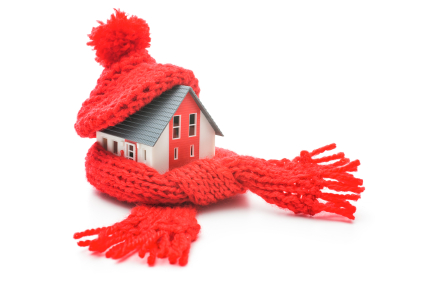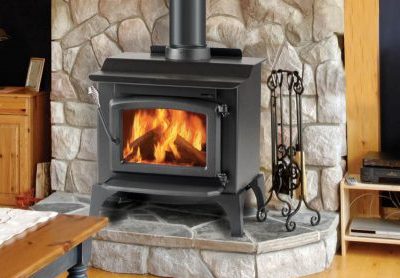
Not only can a reduction in the amount of energy you use lower your impact on the Earth, but it lowers the impact on your wallet, freeing up some funds for emergencies or for other uses. In a 2013 survey, 10 percent of renters who participated in a Rent.com poll said that utilities are their biggest monthly expense, coming in third after monthly rent and groceries. And just heating your living spaces accounts for about 48 percent of your home’s total energy bills, according to the U.S. Department of Energy.
None of the things listed below will require a big investment, but they should help you notice a little relief when your next energy bill comes.
1. Use the sun for free heat: That burning bright orb in the sky should be the focus of temperature control in your residence throughout the year, even in summer. However, once winter rolls around, open the curtains on your south-facing windows during the winter days to bring free heat into your home. Close your window coverings when the sun goes down to keep the heat locked inside.

2. Use a programmable thermostat: Save up to 10 percent on your heating costs per year by setting your thermostat 7 degrees to 10 degrees lower for eight hours a day, says Energy.gov. Set it and forget it by using a programmable thermostat. This works especially well if you are at work during the day. Set the thermostat to 62 degrees for the hours you’re working instead of 70 and you could immediately start seeing the savings on your next bill. If you stay home, try lowering the thermostat overnight by a few degrees while you sleep. You likely won’t notice the difference, and if you do, toss a warmer winter blanket on the bed.
3. Adjust your water temperature: Having hot water at your disposal is a big energy user. The U.S. Department of Energy recommends keeping your water heater’s thermostat set at 120 degrees. According to the agency, anything higher is unnecessary. Water that’s too hot can even be dangerous and scalding. Every 10-degree reduction in your water heater’s thermostat can save you about 3 to 5 percent on your energy bill.
4. Use a ceiling fan to your advantage: Homes that have better ventilation and airflow are usually more energy efficient in both the heat of the summer and during those cold and snowy winter months. If you have ceiling fans in your living space, you have so much more control over ventilation than you know. Ceiling fans can be used strategically to achieve better airflow: counter-clockwise will push hot air up in the summer and clockwise will trap heat inside to keep your rooms warmer during cooler months. Turn your ceiling fan on a low setting to gently push hot air back down.

5. Use a wood burning stove for heat: This obviously only works if you have a wood burning stove and firewood isn’t insanely expensive, or you have the ability to chop it yourself.
Wood burning stoves are both warm and efficient, but in some areas, you’ll have to invest a lot of labor to make up for the lower cost of energy usage. It’s definitely worth it to some, but not to all.
6. Change your furnace filter and keep vents clean and unblocked: Replace the furnace filters regularly, even monthly, depending on the type you buy and how much your furnace needs to be running. Read your appliance’s manual to find the replacement schedule and type, as well as installation instructions. Keeping your furnace and vents properly maintained, such as making sure the vents remain unblocked, will reduce energy consumption and help you save some money. Check your furnace filter monthly, and replace it when it gets dirty. When you are checking your filter, also consider cleaning your vents and clearing any that have obstructions.
7. Close all drapes/blinds/curtains at night: Reduce heat loss by keeping drapes closed at night, or when the sun is not streaming in.
8. Only heat the rooms you use: If you have rooms that you never use, like guest rooms or large storage areas, close and seal off the vents in those rooms to be more energy efficient and direct the flow of warm air into the rooms you use the most. By using a space heater in the rooms where you need it and setting the thermostat to 62 degrees, you can save approximately $200 each year. This comes with a disclosure, however. You need to heat rooms that have running water, such as bathrooms and kitchens to avoid frozen pipes. But you can keep the room at a lower temperature, like 50 degrees, and not have to worry much about the pipes freezing.
9. Invest in insulation: If you have some extra cash, try investing in some really good insulation. While this is the most expensive solution on the list and may seem counterproductive as you’ll be spending thousands to save hundreds every year, it will eventually come out as savings. Hundreds of thousands of dollars in energy costs are lost each year due to escaping warm and cold air in homes because they lack the proper insulation. Get some inexpensive insulation from your local home improvement store, and cover up all those areas where heat might escape. Start with foam weather stripping for your doors and windows; it’s cheap and is extremely easy to apply. If there are places that seem “leaky” try using caulk to seal them up. Larger gaps that allow a bigger chunk of air may require expanding foam to completely block. If your home is older, you may want to consider paying to upgrade all of your insulation.
These tips should help you to save on your energy costs this winter and have a little extra cash on hand. Not only will you be saving money, but you could also be helping the planet.

